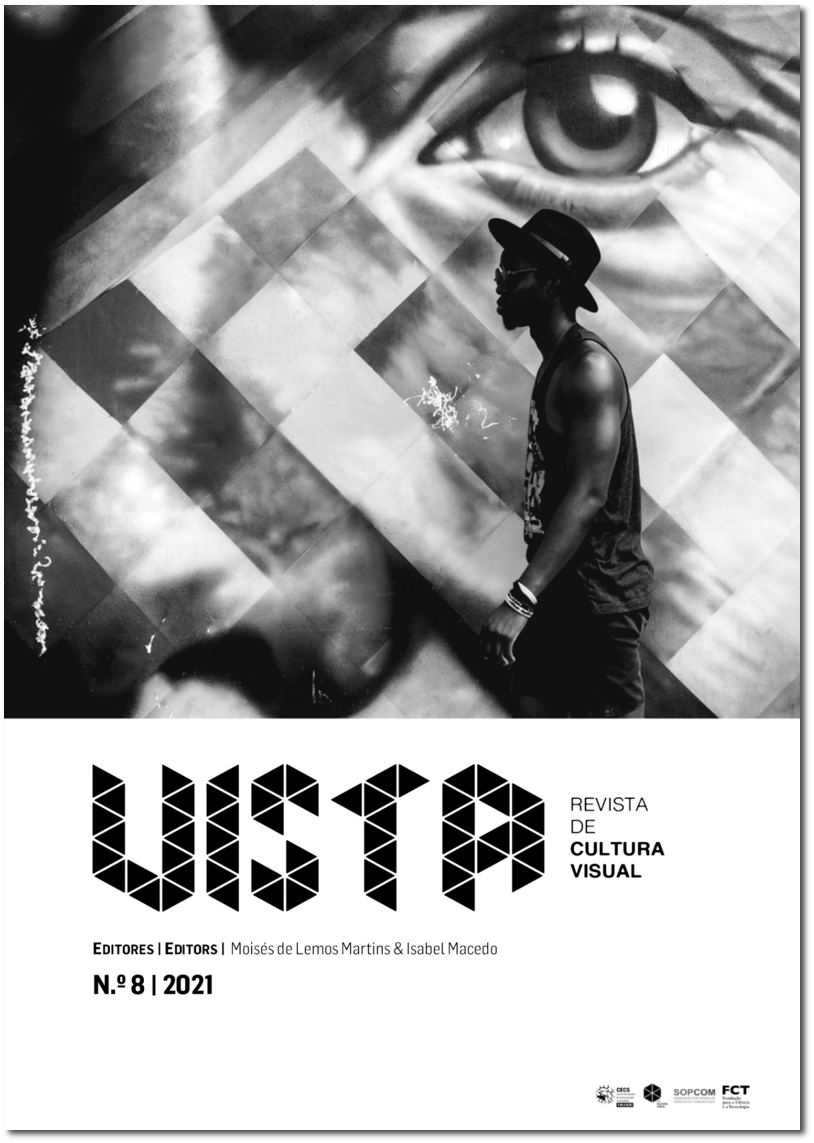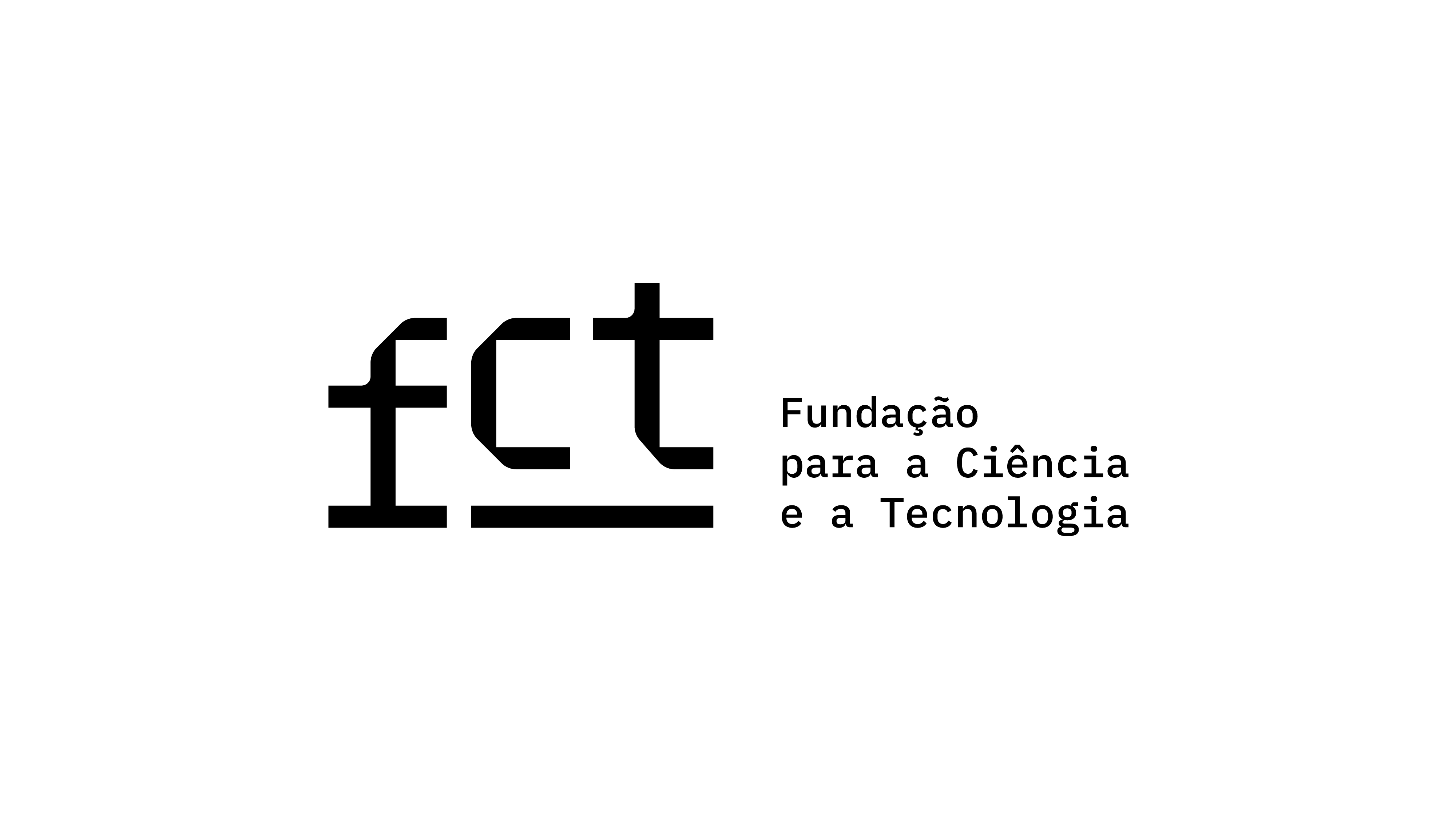Repetitions of Violence in the Works of Vitória Cribb and Welket Bungué
DOI:
https://doi.org/10.21814/vista.3594Keywords:
antirracismo, algoritmos, audiovisual, representações da violência, recursividadeAbstract
The article describes three audiovisual pieces (@Ilusão, Bustagate and Eu Não Sou Pilatus, produced by Vitória Cribb and Welket Bungué, between 2019 and 2020). It discusses how they address, in their way, the repetition of violence against Black bodies in the digital environment of the web. As such, it invokes a qualitative and aesthetic analysis of the videos’ features and the spaces where they were found. Following Hui (2021), the paper explores the assumption that art can shed light on the irrationality that algorithms enable and reach the sublime, the non-rational. In doing so, the creative minds behind the works cited forge more than escapist perspectives from reality to offer antiracist angles about the explicit irrationality of violence — like in Bungué — or to model deformed algorithmic systems — like in Cribb. Thanks to the recursivity turned into artifacts, interpreting phenomena such as beatings and barbaric executions gains complex meanings: repetitions found in social life meet their audiovisual counterparts and create discourses via digital sharing. Besides holding accountable those who allow and disseminate such representations — in and out of the web —, the paper makes a case that the artists appropriate both in form and content certain social manifestations which perpetuate types of violence so that the online environment can also feature more reflection and dialogue.
Downloads
References
Bungué, W. (Diretor). (2019). Eu não sou Pilatus [Filme]. Kussa Productions.
Bungué, W. (Diretor). (2020). Bustagate [Filme]. Kussa Productions.
Corrêa, L. G. (2020). Intersectionality: A challenge for cultural studies in the 2020s. International Journal of Cultural Studies, 23, 823–832. https://doi.org/10.1177/1367877920944181
Couldry, N., & Hepp, A. (2016). The mediated construction of reality. Polity Press.
Cribb, V. (2020, 10 de novembro). @ ilusão [Vídeo]. new art city. https://newart.city/catalog/illusao-vitoria-cribb
Edwards, E. D. (2020). Graphic violence: Illustrated theories about violence, popular media and our social lives. Routledge.
Ferrell, J., Hayward, K., & Young, J. (2008). Cultural criminology: An invitation. SAGE Publications.
Giddens, A. (1991). As consequências da modernidade (R. Fiker, Trad.). Editora UNESP. (Trabalho original publicado em 1990)
hooks, b. (1992). Black looks: Race and representation. South End Press.
Hui, Y. (2019). Recursivity and contingency. Rowman & Littlefield International.
Hui, Y. (2021). Art and cosmotechnics. e-flux.
Kilomba, G. (2008). Plantation memories: Episodes of everyday racism. Unrast.
Kitchin, R., & Dodge, M. (2011). Code/space: Software and everyday life. MIT Press.
Lytle, R. D., Bratton, T. M., & Hudson, H. K. (2021). Bystander apathy and intervention in the era of social media. In J. Bailey, A. Flynn, & N. Henry (Eds.), The Emerald international handbook of technology facilitated violence and abuse (pp. 711–728). Emerald Publishing Limited. https://doi.org/10.1108/978-1-83982-848-520211052
Marcelino, V., & Câncio, F. (2021, 19 de janeiro). Foi ódio racial que matou Bruno Candé, acusa Ministério Público. Diário de Notícias. https://www.dn.pt/sociedade/investigacao-da-pj-provou-odio-racial-no-homicidio-de-bruno-cande-13247985.html
Oliveira, A. B. de. (2020). Breaking canons: Intersectional feminism and anti-racism in the work of black women artists. Vista, (6), 79–100. https://doi.org/10.21814/vista.3060
Ramos, D. O. (2015). Ontologia do espaço numérico: Investigação preliminar a partir do diagrama. In I. Machado (Ed.), Diagramas-explorações no pensamento-signo dos espaços culturais (pp. 53–69). Editora Alameda.
Ramos, D. O. (2017). A violência a partir do número e suas modelizações: Mapeamento inicial. In M. Barbosa, M. do C. S. Barbosa, M. Z. V. Ferreira, & C. M. Machado (Eds.), Anais do 40º Congresso Brasileiro de Ciências da Comunicação: Intercom – Sociedade Brasileira de Estudos Interdisciplinares da Comunicação. 40º Congresso Brasileiro de Ciências da Comunicação (pp. 1–12). Intercom. https://portalintercom.org.br/anais/nacional2017/resumos/R12-0279-1.pdf
Ramos, D. O. (2020). A fragmentação da esfera pública e sua mediação pelo algoritmo: Discurso de ódio, violência da positividade e novas literacias. In B. Saada (Ed.), Caminhos da comunicação: Tendências reflexões sobre o digital (pp. 52–60). Appris.
Rezende, P. D. (2020). Simulacro e repetição como contrainformação na era da sociedade de controle. interFACES,2(30), 103–119. https://revistas.ufrj.br/index.php/interfaces/article/view/37688
Silva, T. (2020). Visão computacional e racismo algorítmico: Branquitude e opacidade no aprendizado de máquina. Revista da Associação Brasileira de Pesquisadores/as Negros/as (ABPN),12(31), 428–448. https://doi.org/10.31418/2177-2770.2020.v12.n.31.p428-448
van Dijck, J., Poell, T., & Waal, M. de. (2018). The platform society. Oxford University Press.
Downloads
Published
How to Cite
Issue
Section
License
Copyright (c) 2021 Eduardo Prado Cardoso

This work is licensed under a Creative Commons Attribution 4.0 International License.
Authors own the copyright, providing the journal with the right of first publication. The work is licensed under a Creative Commons Attribution 4.0 International License.













